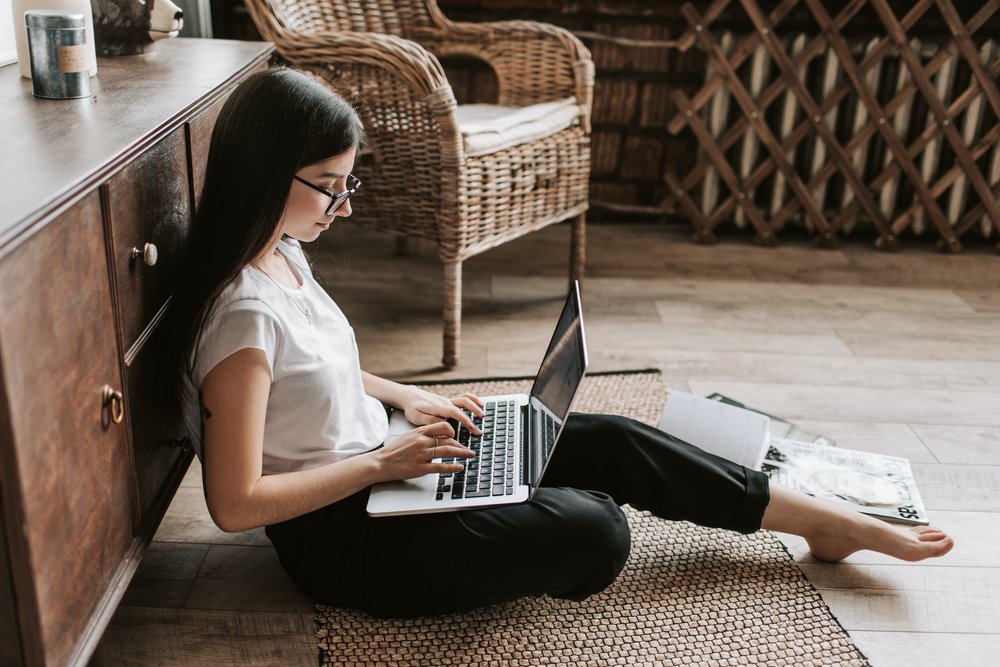While most of us rejoiced at the idea of finally getting the break we have been looking for, in reality, the fine line between comfort and an unhealthy lifestyle seems to be disappearing.
The effects of the WFH(Work From Home) era
Attending meetings in your favorite pyjamas, bringing back the no-messy look, and sitting in one place for 75% of your time working has given rise to a new lifestyle also known as the “Lockdown Lifestyle”.
With a lack of social interaction and exercise, it has started to show a decline in both mental and physical health. Insomnia, agitation, increased stress, and anxiety is some of the many after-effects people face from extended work from home.
The 9-5 jobs pre-pandemic era did face a similar problem of sitting for prolonged hours, but there was still room for stepping into an active lifestyle with our friends and family, be it the weekend street cricket or a game of badminton every night.
It’s never too late to get fit, but before that, it’s important to understand the health complications that could arise from leading a sedentary lifestyle.
What happens when you are sitting for a long period of time
Leading an inactive or sedentary lifestyle has complications that act as a domino effect. One thing leads to another and/or is collectively responsible for the decline in health. Let’s read on to know more about how it affects us.
1. Cardiovascular complications
The heart is one of the strongest muscles in our body and pumps around 7,570 litres of blood every day, for it to function well and smoothly, it requires to be exercised, and sitting for a major part of the day restricts the same.
This also means that fewer calories are burnt which can lead to our arteries being clogged with fat leading to a higher risk of developing cholesterol. When delivering oxygen to other parts of the body becomes difficult or strenuous for the heart, it can cause inflammation.
This could happen due to excess insulin, a diet high in sugar and carbs & free radicals caused by stress. A simple 30 minutes walk every day could be your first step toward taking care of your heart.
2. Increases Risk Of Type 2 Diabetes
When we eat food, our body produces a hormone known as insulin that converts food into energy. When we sit for long hours, it relaxes our major muscle groups, which makes them absorb very little amounts of sugar from the blood. This causes an imbalance leading to a higher risk of prediabetes and type 2 diabetes.
3. Weight Gain
Not burning enough calories and the effects of not having enough physical activity are already covered in the above-mentioned points. In addition to that, binge eating is another concern that has become a common way of dealing with work pressure.
With longer working hours, cortisol levels in our bodies increase leading to a gain in appetite. If not handled carefully, unhealthy snacks and empty high-calorie food become a go-to option which also leads to unhealthy weight gain and eating habits.
4. WFH Stress & Anxiety
With no fixed timings of work, the average person is now spending more time working than they did at offices. Handling household chores along with irregular meeting hours can lead to stress which can be a trigger point for those who already have anxiety.
In January 2021, 41% of adults reported symptoms of anxiety and/or depressive disorder. With elevated levels of cortisol, in some cases adrenaline, and no creative outlet, it not only declines mental health but could start showing physical symptoms in the long run.

5. Irregular Sleeping/ Sleepless Night Patterns
We spend almost one-third of our life sleeping which is essential in maintaining good health. It is recommended that we get an average of 7-9 hours of good-quality sleep. With our bodies not getting tired physically and our minds overworking, there could be a disconnect in our sleeping patterns.
The bright blue light emitted from our phones and laptops may be stopping our bodies from producing melatonin – a hormone essential for restful sleep. In addition to this, stress, poor eating habits, disruptive work schedule are all contributing factors to sleeplessness.
6. Carpal Tunnel Syndrome
If you are feeling numbness and a tingling sensation in the hand and/or arm, it could mean that you have carpal tunnel syndrome. This is caused by pressure on your median nerve, which runs the length of your arm.
And since working long hours in front of the laptop is common with WFH, mundane motions, like typing, or any wrist movements that you do repeatedly can cause carpal tunnel. Here are some quick exercises that can help relieve the symptoms.
7. Text Neck
On average, we spend close to 7 hours a day looking at our laptops, phones, and screens that too not in the right angle. Engaging in one activity for long hours at a stretch can have some health risks associated with text neck. A telltale symptom of text neck is repetitive pains in your neck, shoulder, and head.
When we tilt our head forward or downwards, it adds additional pressure on the cervical spine. This strain is the main reason for constant pain in our neck, upper back, and shoulders. If this is not kept in check, it could cause agonizing pain and could also lead to vertigo in some cases.

Active Lifestyle vs Sedentary Lifestyle
Active Lifestyle
- Adults who regularly engage in some form of physical activity every day (could also be 30 mins of walking every day)
- Less likely to be prone to chronic diseases like cholesterol, thyroid, and diabetes, and/or are able to manage them rightfully.
- Physical activity, in turn, supports mental and cognitive health by increasing blood flow to the brain and increasing mood-boosting chemicals
- Engaging in physical activity for 7 hours a week has shown an increase in chances of living longer by 40%
Sedentary Lifestyle
- Adults who seldom engage in physical activity and are mostly sitting or lying down in one place
- Are more prone to developing health complications in the long run if not taken care of in time.
- An inactive lifestyle is linked to increases in anxiety and depression due to an increase in the stress hormone – cortisol
- Less than 30 minutes of physical activity leads to serious health complications that could be fatal if left unchecked
How to deal with WFH Stress?
Seven Tips to help you get more active through the day
1. Make a timed playlist
It’s not uncommon to bob your head to some good music while working. Why not make the most out of it? Create a timed playlist of half an hour each or listen to the Finding Productivity Mind series on the Ultrahuman app and once the playlist ends or after every track on the series, remind yourself to get up and walk around the house for 5-10 mins.
2. Schedule a happy hour
Set aside an hour in a day to get your body moving! It could be as simple as going for a walk to admire a beautiful sunset or picking up a dance/Zumba choreography off the internet. This will not only give you a break but also help reduce stress, burn extra calories and put a smile on your face.
3. Wake Up And Dance
Instead of keeping those blaring alarms on the phone, choose a song that has good beats you can dance to. Waking up and moving to a good song can help relieve anxiety and wake up in a good mood that could last the whole day.
4. Swap Your Food With Healthy Alternatives
Binge eating is common while working. Replace high-calorie snacks with something healthy throughout the day. Having said that, even healthy foods need to be consumed in moderation and this can happen when you practice mindful eating. Make it a point to keep mobile phones and laptops away while eating. Not only will you be able to enjoy your meal, but it will also stop you from binging. You don’t have to entirely give up on your favourite foods, keep a day or two a week aside as reward days where you can enjoy them. Always remember, moderation is key.
5. Make Mindfulness A Habit
Mindfulness is the art of practicing how to be aware of our surroundings and not let our minds wander into the past or future. Most of our ‘sitting syndrome’ arises from mindlessly scrolling through social media, binge eating empty calories, and so on. By being aware of the activities that you do throughout the day, you can maneuver your mind to get more active by taking a walk every time you find yourself scrolling or opting for a healthier snack swap while snacking.

6. Don’t get too comfortable
A part of the reason why getting up from one spot is difficult is that we make everything available to us at one arm’s distance. Have an office-like setup to remind you to go fill your coffee mugs. What can also help is getting out of the pyjamas and putting on a casual outfit to trick your brain to get more active.
7. Simple exercises to practice
Now it can get tough to get up and walk when you have meetings scheduled around the clock or if you have pressing deadlines to meet, another way to make sure you are getting even minimal movement is by including stretches that you could do around your desk called Desk Yoga to help relieve the pain of sitting for long hours.
Breaking a habitual pattern may seem overwhelming as it often comes off as turning your life around in one day, but in reality, that’s not the case. By understanding the health complications and ways to step into an active lifestyle you can work out a plan that’s best suited for you! Start small, start somewhere.
Reference








